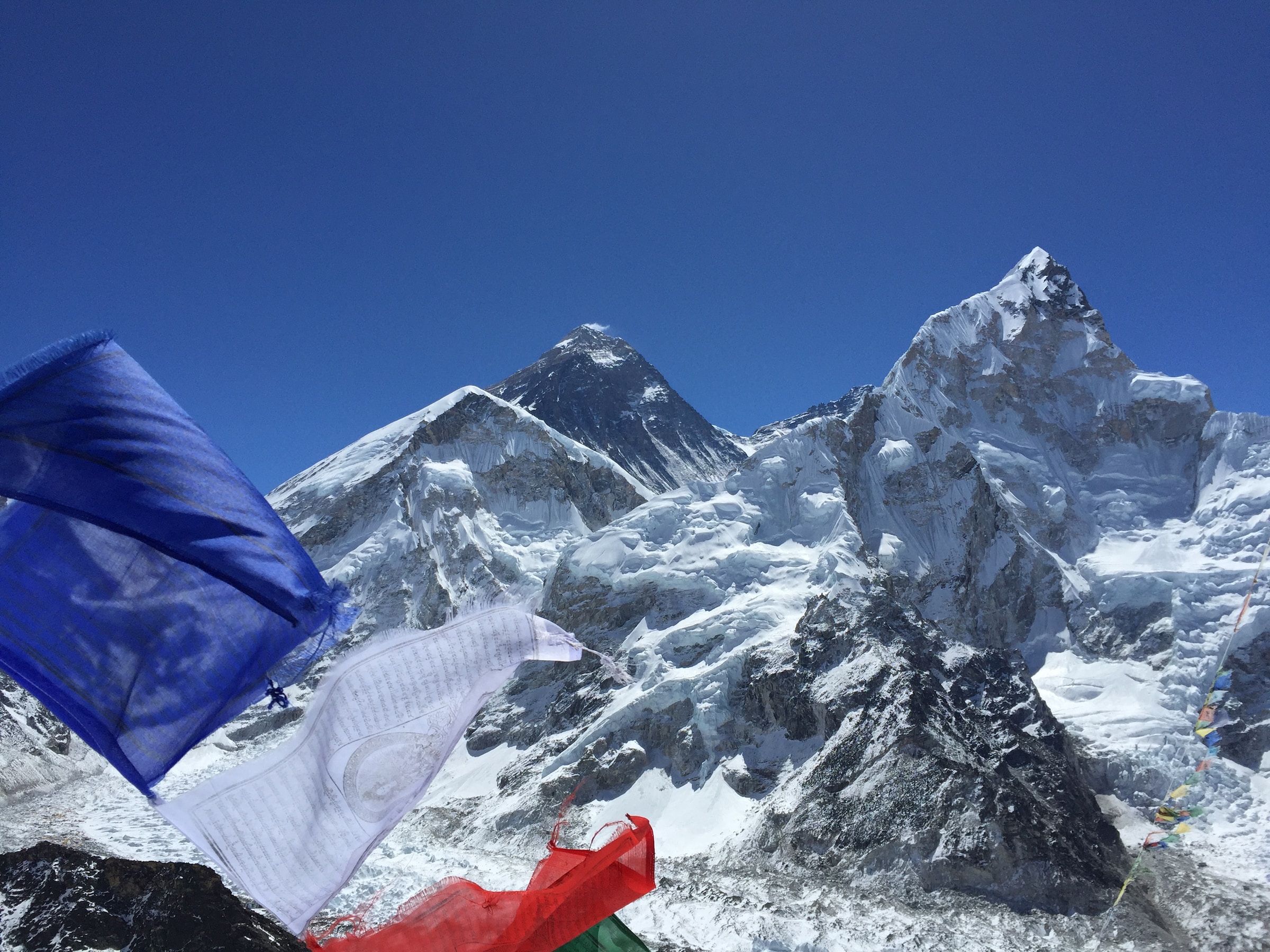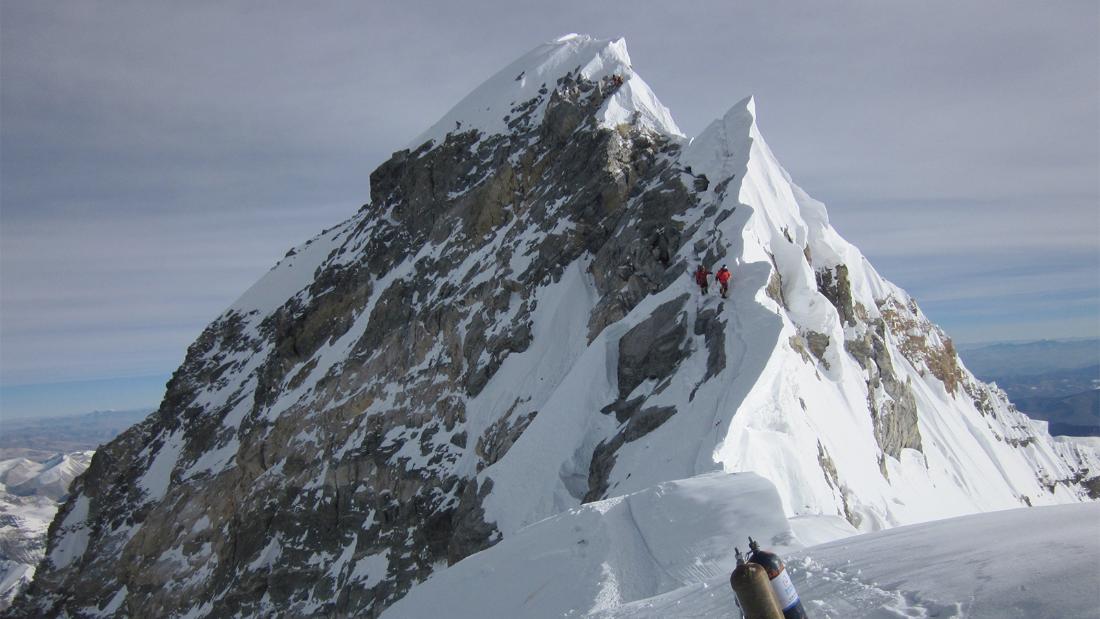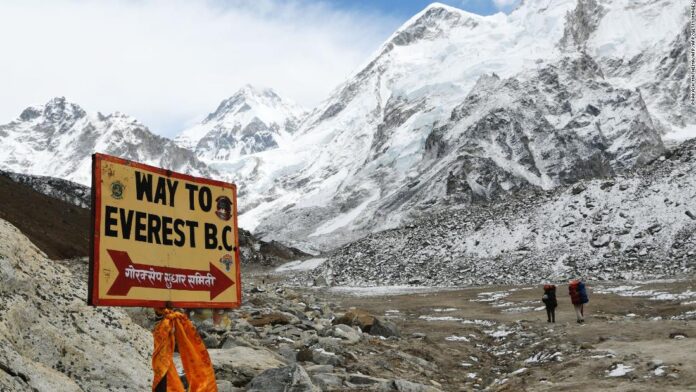It takes about 6-8 weeks to climb Mount Everest, depending on weather conditions and acclimatization. Climbing the world’s highest peak is a challenging and arduous journey that requires physical fitness, mental strength, and proper preparation.
Many climbers spend months or even years training and planning for this ultimate mountaineering adventure. From navigating treacherous terrain to battling extreme altitude sickness, reaching the summit of Mount Everest is a test of endurance and determination. Despite the risks and challenges involved, the allure of conquering this iconic peak continues to attract climbers from around the globe seeking the ultimate mountaineering achievement.
In this blog post, we will explore the incredible feat of climbing Mount Everest and the dedication required to reach its summit.
The Allure Of Everest
Mount Everest, the highest peak in the world, has long held a mystical attraction for adventurers and climbers alike. Standing at a staggering height of 29,029 feet (8,848 meters), it beckons to those seeking the ultimate test of strength, endurance, and courage. With its awe-inspiring beauty and treacherous terrain, Everest has become the pinnacle of adventure for mountaineers from around the globe.
The Peak Of Adventure
Scaling Mount Everest is no ordinary feat; it is a test of human limits and a triumph of the human spirit. The journey to the summit is a grueling and perilous one, filled with physical and mental challenges that push climbers to their very limits. The altitude, extreme weather conditions, and unpredictable terrain make it a treacherous endeavor that requires meticulous planning, unwavering determination, and unwavering willpower.
For climbers, reaching the summit of Everest is the ultimate achievement, a badge of honor that sets them apart from the rest. It is a testament to their strength, courage, and unwavering commitment to their goal. The sense of accomplishment and euphoria experienced at the top of the world is unparalleled, making all the hardships and sacrifices along the way worthwhile.
Why Everest Captivates Climbers
What is it about Mount Everest that captivates climbers and draws them in? The allure lies in the combination of its sheer physical challenge and the sense of adventure it embodies. The mountain’s towering presence and majestic beauty ignite a sense of awe and wonder, inspiring individuals to push themselves beyond their limits.
Additionally, Everest represents a personal journey of self-discovery and transformation. Climbing Everest requires climbers to confront their fears, overcome obstacles, and tap into inner reservoirs of strength and determination. It is an opportunity to test one’s physical and mental endurance, to challenge oneself in the face of adversity, and to emerge stronger and more resilient.
Furthermore, Everest offers a unique and unparalleled experience of the natural world. The breathtaking vistas, the pristine snow-covered slopes, and the serene silence of the mountain create an otherworldly atmosphere that cannot be replicated elsewhere. The opportunity to be part of this majestic landscape, to witness the raw power and beauty of nature, is a privilege that few can resist.
In conclusion, the allure of Mount Everest lies in its extraordinary combination of physical challenge, personal growth, and the opportunity to connect with the awe-inspiring beauty of the natural world. It is a siren call to those who seek adventure, pushing them to conquer their fears, test their limits, and embrace the indomitable spirit of human exploration.
Everest By The Numbers
Height And Geography
Mount Everest, located in the Himalayas, stands as the world’s tallest peak, with a staggering height of 29,032 feet above sea level. Its challenging terrain and extreme weather conditions make it a formidable conquest for even the most experienced climbers.
Record Ascents And Attempts
Over the years, Mount Everest has witnessed remarkable feats of human endurance. The mountain has been summited by a total of 5,987 individuals as of 2021, with 10,877 successful ascents. However, the mountain also holds a grim record of 295 fatalities, emphasizing the dangers that come with attempting such a formidable peak.
Preparation For The Climb
Before attempting to climb Mount Everest, one must undergo thorough preparation to ensure a safe and successful journey. This includes physical conditioning and acclimatization essentials. Let’s explore each of these aspects in detail:
Physical Conditioning
Physical conditioning is crucial for climbers attempting to conquer Mount Everest. The extreme altitude, harsh weather conditions, and demanding terrain require individuals to be in peak physical condition. Here are some key aspects of physical conditioning:
- Cardiovascular endurance training to improve stamina and oxygen utilization.
- Strength training to build muscle and improve overall body strength.
- Endurance exercises to prepare the body for prolonged physical exertion.
- Balance and agility exercises to navigate challenging terrain.
It is recommended to work with a professional trainer or mountaineering expert who can design a personalized training program based on the individual’s fitness level and goals.
Acclimatization Essentials
Acclimatization is a crucial aspect of preparing for a Mount Everest climb. As climbers ascend to higher altitudes, the body needs time to adjust to the decreased oxygen levels. Here are some essentials for acclimatization:
- Gradual ascent: Climbers should follow a slow and steady ascent schedule, allowing the body to adjust to the changing conditions.
- Rest days: Regular rest days are essential to allow the body to recover and adapt to the altitude.
- Hydration: Staying hydrated is vital for acclimatization. Drinking plenty of water helps prevent altitude sickness and keeps the body functioning optimally.
- Proper nutrition: A well-balanced diet rich in carbohydrates, proteins, and fats provides the necessary fuel for the body during the climb.
- Altitude training: Some climbers may choose to undergo altitude training to simulate the conditions they will encounter on Mount Everest.
By following these acclimatization essentials, climbers can increase their chances of reaching the summit safely and successfully.
Climbing Routes To The Summit
Mount Everest, the highest peak in the world, offers several climbing routes to the summit. Each route presents unique challenges and requires different levels of skill and experience. In this blog post, we will explore two popular routes: the Southeast Ridge Route and the Northeast Ridge Challenge.
The Southeast Ridge Route
The Southeast Ridge Route is the most commonly used route to climb Mount Everest. It was the route taken by Sir Edmund Hillary and Tenzing Norgay when they made the first successful ascent in 1953. This route starts from the Nepalese side of the mountain and is also known as the South Col Route.
Here are some key features of the Southeast Ridge Route:
- Length: Approximately 20 kilometers (12.4 miles)
- Difficulty Level: Challenging
- Technical Challenges: Icefalls, crevasses, steep sections, and the famous Hillary Step
- Base Camp: Located at an altitude of 5,364 meters (17,598 feet)
- Camp Locations: Camps 1, 2, 3, 4, and the final camp at the South Col
This route offers breathtaking views and is favored by climbers due to the availability of well-established camps and support infrastructure. However, it can be crowded during peak climbing seasons.
The Northeast Ridge Challenge
The Northeast Ridge Challenge is the second most popular route to climb Mount Everest. It starts from the Tibetan side of the mountain and is also known as the North Col Route. This route was first successfully climbed by a Chinese expedition in 1960.
Here are some key features of the Northeast Ridge Challenge:
- Length: Approximately 22 kilometers (13.7 miles)
- Difficulty Level: Extremely challenging
- Technical Challenges: Treacherous weather conditions, high winds, and steep sections
- Base Camp: Located at an altitude of 5,150 meters (16,896 feet)
- Camp Locations: Camps 1, 2, 3, 4, and the final camp near the Northeast Ridge
This route offers stunning views of the Tibetan Plateau and is known for its serene and remote environment. It is considered more challenging than the Southeast Ridge Route, mainly due to the harsh weather conditions and the need for self-sufficiency.
Both the Southeast Ridge Route and the Northeast Ridge Challenge provide climbers with remarkable experiences and incredible achievements. The choice of route ultimately depends on the climber’s preferences, experience, and the level of challenge they seek.
Timeline To The Top
How Long Does It Take To Climb Mount Everest? Embarking on the journey to summit Mount Everest is a monumental feat that demands careful planning and strategic timing. The timeline to the top involves navigating through various stages, each influenced by unique factors such as weather conditions and physical endurance. Understanding the duration of the climb and the optimal weather windows for ascent is crucial for mountaineers aiming to conquer the world’s highest peak.
Base Camp To Summit Duration
Ascending from the Base Camp to the summit of Mount Everest is an arduous endeavor that requires meticulous planning and physical resilience. The average duration for climbers to reach the summit from the Base Camp is approximately 6 to 9 weeks, encompassing the acclimatization process and multiple rotations between different camps at higher altitudes.
Weather Windows For Ascent
Weather plays a pivotal role in determining the feasibility of summiting Mount Everest. The primary weather windows for ascent typically occur during the months of May and October, offering relatively stable conditions with lower wind speeds and decreased avalanche risk. These periods provide climbers with the best opportunity to attempt the final push to the summit while minimizing exposure to extreme weather events.
The Role Of Sherpas
Guides And Guardians
Sherpas play a crucial role as guides and guardians for climbers attempting to conquer Mount Everest. Their deep knowledge of the terrain and weather conditions is invaluable for ensuring the safety and success of the expedition.
Their Impact On Summit Success
The presence of Sherpas significantly increases the chances of summit success for climbers. Their expertise in navigating the treacherous slopes and their ability to set up camps and fix ropes are instrumental in helping climbers reach the summit.
Surviving The ‘death Zone’
As climbers ascend Mount Everest, they must face the treacherous ‘Death Zone’, where survival becomes a critical challenge due to extreme altitude and harsh conditions. In this zone, the human body struggles to acclimatize, leading to a range of life-threatening risks.
Oxygen Use At High Altitudes
At high altitudes, climbers rely on supplemental oxygen to combat the effects of hypoxia, ensuring optimal oxygen saturation levels for survival.
Navigating Lethal Obstacles
Climbers face a myriad of lethal obstacles in the ‘Death Zone’, including avalanches, crevasses, and extreme weather conditions, demanding utmost caution and skill.
After The Summit
After successfully summiting Mount Everest, climbers face challenges during the descent and returning to Base Camp.
Descent Dangers
Descending Mount Everest poses risks like avalanches, exhaustion, and altitude sickness.
Navigation becomes crucial due to fatigue and changing weather conditions.
Proper gear and caution are essential to safely navigate the treacherous downward journey.
Returning To Base Camp
Reaching Base Camp involves retracing steps while battling fatigue and dwindling supplies.
Climbers must rest and recover before embarking on the journey back to Base Camp.
Communication and coordination among team members ensure a safe return to Base Camp.
Environmental Concerns
Climbing Mount Everest can take around 6-9 weeks, depending on weather conditions and acclimatization. Environmental concerns such as melting glaciers and waste pollution are increasingly impacting the mountain’s delicate ecosystem. It’s important for climbers to be mindful of their environmental impact and take steps to preserve this natural wonder.
Preserving The Mountain Ecosystem
Mount Everest’s fragile ecosystem needs protection.
Preservation efforts are crucial to maintain biodiversity.
Waste Management Initiatives
Implementing effective waste management strategies is essential.
Eco-friendly solutions must be prioritized to minimize environmental impact.
Credit: www.thebmc.co.uk
Tips For Aspiring Climbers
Embarking on a journey to conquer Mount Everest is a monumental feat that requires meticulous planning and preparation. Aspiring climbers must equip themselves with the right gear and mental strategies to increase their chances of success. Here are some essential tips to help you on your quest:
Choosing The Right Gear
When preparing to climb Mount Everest, selecting the appropriate gear is crucial. Ensure you have high-quality equipment such as insulated clothing, sturdy boots, and reliable climbing tools to withstand extreme conditions.
Mental Preparation Strategies
Conquering Mount Everest is not just a physical challenge but also a mental one. Practice meditation and visualization techniques to build mental resilience and stay focused during arduous climbs.
Personal Tales Of Triumph
Notable Summit Stories
Mount Everest has been the backdrop for countless tales of triumph. One such story is that of Tenzing Norgay and Sir Edmund Hillary, who etched their names in history as the first to reach the summit in 1953. Their remarkable achievement inspired a legacy of climbers seeking to conquer the world’s highest peak.
Lessons From The Journey
Embarking on the journey to Mount Everest’s summit is a testament to resilience, determination, and the human spirit. Each climber’s experience offers profound insights and lessons that extend beyond the mountain. From the importance of preparation and adaptability to the value of teamwork and perseverance, these lessons resonate deeply with all who dare to chase their dreams.

Credit: www.themanual.com

Credit: www.cnn.com
Frequently Asked Questions
How Long Does It Take To Climb Mount Everest?
Climbing Mount Everest can take anywhere from 6 to 9 weeks depending on the route, weather conditions, and the climber’s experience. The ascent usually takes around 2 months, with a few days of acclimatization at base camp.
How Much Does It Cost To Climb Mount Everest?
The cost of climbing Mount Everest can vary greatly, ranging from $30,000 to $130,000 or more. The expenses include permits, equipment, guides, Sherpas, food, accommodation, and transportation.
How Dangerous Is Climbing Mount Everest?
Climbing Mount Everest is considered one of the most dangerous expeditions in the world. The risks include altitude sickness, avalanches, frostbite, falls, and extreme weather conditions. About 11% of climbers have died while attempting to climb Everest.
How Do Climbers Prepare For Mount Everest?
Climbers prepare for Mount Everest by undertaking rigorous physical training, including cardio, strength, and endurance exercises. They also practice climbing on other mountains, learn technical skills, and get acclimatized to high altitudes.
Conclusion
After understanding the factors that affect the duration of climbing Everest, it is clear that there is no definite answer to the question of how long it takes to climb the mountain. However, with proper preparation, training, and acclimatization, climbers can increase their chances of a successful summit.
It is important to remember that climbing Everest is a challenging and dangerous endeavor that should only be attempted by experienced and well-equipped climbers. Ultimately, the journey to the top of the world’s highest mountain is a unique and personal experience that requires patience, perseverance, and a deep respect for the mountain and its surroundings.


